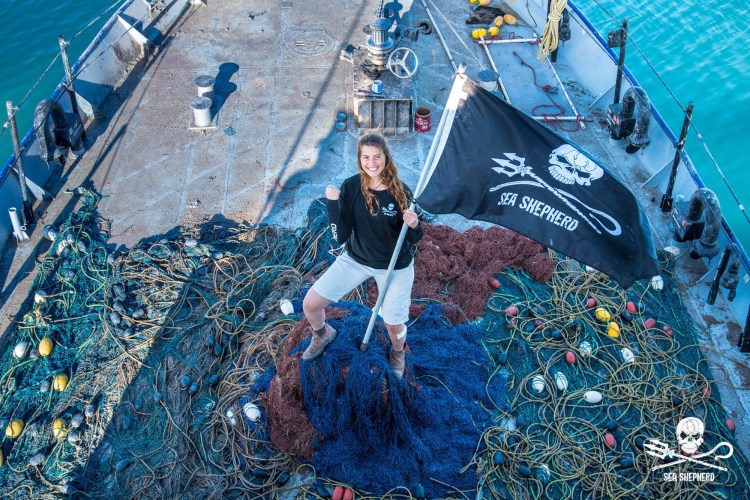Sea Shepherd Removes over 1000 Pieces of Illegal Fishing Gear from Vaquita Habitat
Published by Sea Shepherd Conservation Society
Landmark achievement reached before the end of the decade, as the fight to save the vaquita continues
San Felipe, Mexico – December 31, 2019 – Operation Milagro, Sea Shepherd’s campaign to save the critically endangered vaquita porpoise, reached a significant milestone this month.
Over the past six seasons of the campaign, more than 1000 pieces of illegal fishing gear have been removed from the Upper Gulf of California. This federally-protected and UNESCO recognized area is home to the vaquita, the most endangered marine mammal in the world.

Sea Shepherd crews have removed more than 650,000 feet (200,000 meters) of illegal gear from the vaquita habitat, equivalent to over 450 times the height of the Empire State Building.
Gillnets, which are prohibited in the area, are the primary threat to the survival of the vaquita – a species whose numbers have seen a rapid decline over past decades. At present, it is estimated that only 6-19 vaquitas remain in existence.
In March 2019, Sea Shepherd encountered a dead vaquita trapped in a gillnet, removing any doubt that the illegal fishing gear poses a deadly threat to the tiny cetacean.
“This highlights the importance of our work in the area,” says JP Geoffroy, Campaign Leader for Operation Milagro, continuing, “there are so many illegal nets in these waters, and every net we remove can mean the difference between survival and extinction for the vaquita. We are not going to stop, we are not going to back down. The survival of a species is at stake.”
The illegal fishing gear is put in place by poachers hoping to catch totoaba, a protected species whose swim bladders sell for a high price on the Chinese black market. These nets kill indiscriminately and are responsible for the deaths of numerous species present in the area including whales, turtles, sea lions, dolphins, and vaquitas.
Sea Shepherd has been present in the Upper Gulf of California since 2015, working in close collaboration with Mexican authorities to remove the illegal fishing gear that threatens the area. During this time, the crew has documented the entanglement of over 7000 animals and have successfully rescued and released 3977 of them back into the ocean. 975 of the trapped animals were listed as threatened, endangered, or critically endangered on the IUCN Red List. Over 100 of these at-risk animals were saved.
Earlier in the year, several live vaquitas were sighted in the area during a joint scientific expedition coordinated by Mexico’s National Commission on Natural Protected Areas (CONANP) in collaboration with Sea Shepherd and Museo de la Ballena y Ciencias del Mar, with the participation of world leading vaquita researchers and support from the Mexican Navy (SEMAR).
“It is our responsibility to give the vaquita every possible chance to survive and recover,” says Eva Hidalgo, Sea Shepherd’s Science Coordinator. “During the last collaborative expeditions, we saw several vaquitas, including a mother and a calf pair. These sightings mean there is still hope and we must continue working as hard as ever to remove not only 1000 pieces of illegal fishing gear, but as many as needed. We are here to ensure that the animals we sighted remain safe and become the ones that save this species from extinction”.










